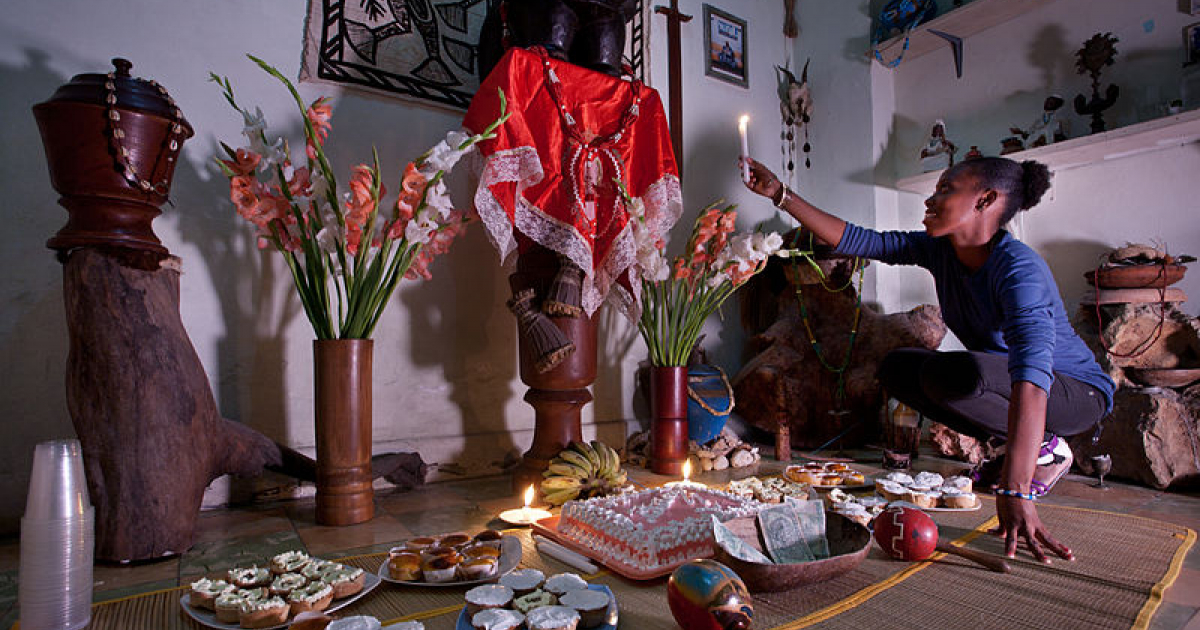
Popular Cuban religiosity has direct influences from Spanish Catholicism and different African religions, especially the Rule of Osha. The instruments of domination in the colonial era led both religious paths through syncretism. That is why this December 4, many Cubans venerate the great Yoruba King, Changó, and the representation of Mary, Santa Barbara.
Santa Barbara, Chango
Changó (or Shango) is the orisha of justice, of masculine strength, of virile sensuality. He is the owner of thunder, lightning and fire. On his day, his children in the Yoruba religion usually prepare a real feast of typical Cuban delicacies at the altar.
If you are not a practitioner of this religion, it is likely that you have not seen an altar. However, I'm almost sure you know that Willy Chirino song, “Mister Don´t Touch the Banana”, in which, with singular humor, he describes a party for Changó.
Changó represents the joy of living, passion, intelligence, fruitfulness and wealth. Celina and Reutilio sang to him, and to Santa Bárbara, back in 1949 in one of the most covered songs in Cuban music, “Long live Changó”.
The offerings to Changó that cannot be missed
Amalá is offered to Shango. This recipe consists of corn flour with milk and okra. They also add green bananas, red wine, toasted corn, bananas, red mamey, among other foods. While, for Santa Bárbara, they always put a glass of red wine, the best, on her altar.
Devotees of Changó or Santa Bárbara are extremely careful with their gifts to the saint. They choose and prepare them with love, they ensure that they are products of the best quality, because respect is also shown in the offering.
In times as turbulent as those we live in, people cling to their beliefs because in them they find peace and love. According to Changó's followers, only next to him can the voices of fear and the moan of passion be heard. While he stands guard as a sleepless soldier, the earth burns beneath his feet.
Comments
Filed in: